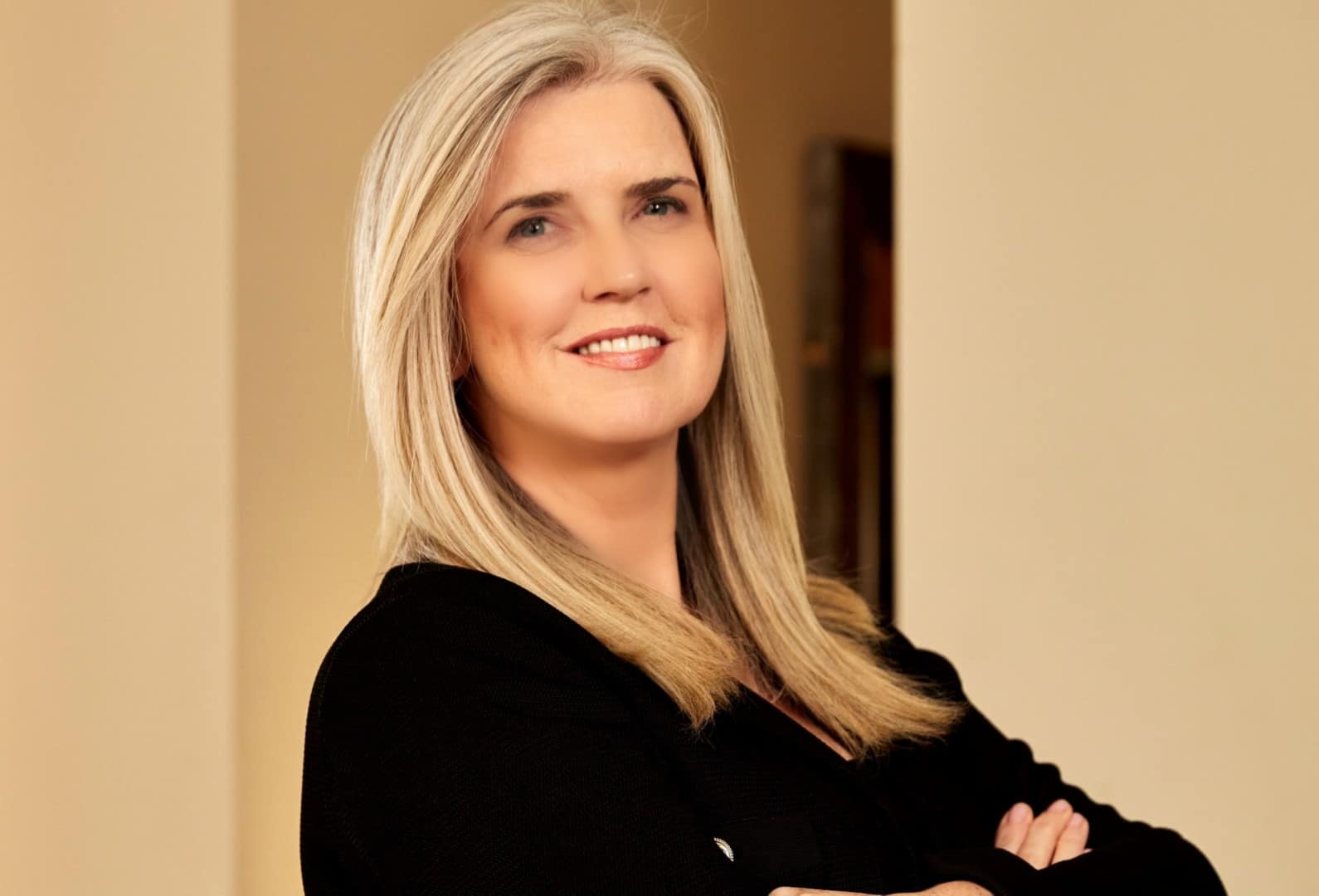Edwina Fitzmaurice, EY’s global chief customer success officer, speaks with Global Finance about technology, innovation and customer success.

Global Finance: How has the tech industry evolved?
Edwina Fitzmaurice: Tech is at the top of the agenda in a different way because of the perceived opportunities and associated risks and challenges—everything is moving at such speed. Digital transformation is back on the agenda. Data-security ethics are becoming top risks for many organizations, and companies are looking to each other, regulators and consultancies to understand the playing field.
GF: Should companies focus on the latest technology trends?
Fitzmaurice: We tend to jump from one trend to another, and there’s been hype over the years with Web3, blockchain, the metaverse, and now AI [artificial intelligence]. People jump through the cycles and swing from one technology to another but having a long-term portfolio view is important as you watch trendlines rather than headlines.
The cycles are like swings and roundabouts. People who are constantly jumping from one swing to another might miss a longer-term trend around a shift in how we think about, experience and build good technology. Jumping from one technology to another is a singular exercise. Still, the roundabouts are exciting. You can collaborate on a topic, invite other people onto the roundabout and you can control whether you go fast or slow.
For technology investments, swings and roundabouts are not the same thing. We encourage people to look at the swings and to find the people and organizations on the roundabouts to build an ecosystem to look at over the short and long term and understand the cycles.
GF: How do you measure customer success?
Fitzmaurice: At the core, it’s about technology adoption and how well people are using the technology. We look at how many use technology and their frequency, as well as the features and functions they use. We also have typical customer success scores like Net Promoter Score. Essentially, customer success is about making sure we deliver on the promise to our clients around technology.
GF: With all of the technology innovation these days, how do you balance that with the idea of safety, security, ethics and governance?
Fitzmaurice: I’m seeing a much closer conversation and collaboration with regulators, which creates a playing field that people can understand. It’s really about the right balance. With too much regulation, the cost of compliance is too high and only the big players can play, which results in monopolies. Equally with too little regulation, startups with limited resources struggle to know where to place their bets and that hampers innovation.
Public/private partnerships with regulators are a good idea, and we’ll likely see more of that. Standards bodies are showing up with a point of view, but regulators have trouble recruiting the right talent to keep up with innovation. Having tech companies work with standards bodies is one way to help bridge that gap to go faster.
GF: Is there a push and pull between regulatory approaches in different countries?
Fitzmaurice: The general sentiment is that the EU tends to be the first to take a position on something and other regulators follow, but not in exactly the same way. Asia has a different perspective around privacy, for example. Everybody’s working on these issues because you need to create a playing field that people understand, and governments want to create an environment where business can be successful while being mindful of risks. We’ll probably continue to see the EU going first, relatively speaking, and then the others will keep up or catch up.
GF: How do you think macroeconomic cycles correlate to the roundabout concept? At the end of 2021, we were thinking about the metaverse as the next big thing, and now we’re looking at AI. How does that correlate?
Fitzmaurice: No one’s immune to economic cycles, but it’s how people place their bets. The metaverse was positioned as the future of the internet and how we’re going to experience the internet, driven by demographics—Generation Z and Alpha—and the gaming industry, which is bigger than the entertainment industry. If that’s true, it didn’t change because the economic cycle changed. The question is whether you can maintain the right level of investment in what you believe is important and not lose momentum when you look at other options or widely cut costs.
There’s a huge amount of investment and expectations around AI, and we’ll see how that plays out. I don’t have a crystal ball—it’s about a portfolio approach and placing your bets and deciding which technology innovations you think are worth hanging on to. Everything finds its level eventually.
GF: Do you think that innovation happens best at times of capital constraint or loose capital?
Fitzmaurice: When there’s capital constraints, you’re more focused around the technology that has potential. Plus, with fewer resources, you have to use more imagination and stretch yourself. People start sharing resources and collaborating in a different way to keep the agenda moving. Those people who are the most innovative hold the line on what they believe are genuine disruptions and continue to keep resources on it.
GF: What are the implications for talent?
Fitzmaurice: Engineers will always be very busy—there’s lots of technology to be engineered and architected. Beyond that, I’m seeing a rise of the low-code/no-code movement, and generative AI is going to make that even more pronounced because effectively, we’re democratizing work done by developers.
On the simpler end, you can talk directly to the data with generative AI. Using a database and language interface, you can interrogate data without building screens, forms or reports. People are going to have incredible tools particularly when we go multimodal. We’re looking at new levels of productivity to problem solve and develop solutions with an artificial intelligence copilot. People who can problem solve and are comfortable with the technology will play an increasingly important role.
There are always going to be jobs in ethics, compliance, cybersecurity, data, data strategy, data governance—these roles are important for the balance between innovation and governance.
GF: How does diversity come into play for your teams?
Fitzmaurice: I’m a big believer in diverse teams. We need to think about our talents in a different way and include the people we are trying to serve in the technology build. This way, we have a better chance to build the kind of technology that we want.
Along with engineers, we’re also hiring artists and musicians to work together with our teams. We’re trying to get to the essence of humanity and of human-centered technology, not just STEM-oriented engineering. We have 40 people on my global team who are neurodiverse, and we have people working with us who are blind and disabled.
GF: How is the demand for technology different across geographies?
Fitzmaurice: Asia is very technologically advanced and moves quickly to innovate and develop disruptive business models and digitize consumers. That kind of technology integration is impressive. Europe innovates and tends to start from a position of protection. The US wants to be very business friendly and doesn’t necessarily have the same level of legislation upfront as Europe. There’s a huge amount of innovation in the US, but friction in the system makes getting it out to people difficult.
GF: Are companies being pushed into technologies that don’t have clear guardrails or risk protections?
Fitzmaurice: It’s the top risk now, and there’s a real struggle with what to do because there’s also fear of missing out. There’s that balance between how far we go and at what speed and having the right people around us. Companies want opportunity and growth and to be part of the next wave while protecting their business.
Companies can mitigate this risk by first looking at their talent and whether the right people are providing advice. You need a road map that includes experimenting in a controlled way. It’s important to collaborate with standards bodies and ecosystem partners, which may mean acquiring skills so you can start playing across the portfolio. Boards of directors are looking for more assurances from management teams, and technologists are transitioning into risk teams as well to bridge that gap. This has to be a very active conversation.



